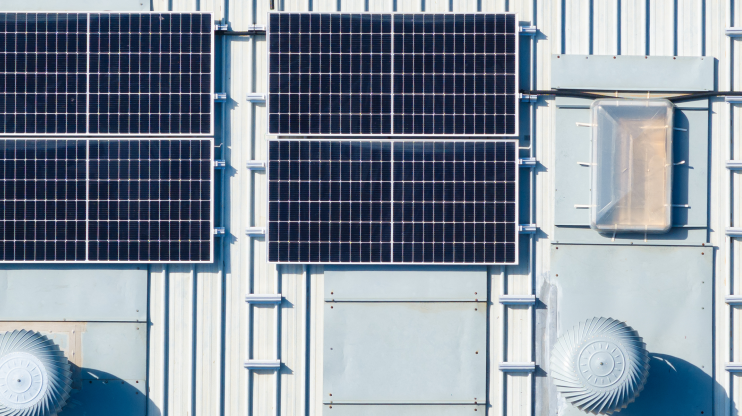On July 4, 2025, President Trump signed into law[1] the One Big Beautiful Bill Act (OBBBA), putting a forthcoming end to many[2] federal clean energy tax credits created under the Biden administration’s Inflation Reduction Act (IRA).
The key detail for facility leaders considering solar installation or procurement: the 48E investment tax credit (ITC) for solar projects is ending[3]. Projects that start construction more than 12 months after OBBBA’s enactment (after July 4, 2026) and are placed in service after December 31, 2027 will no longer qualify. So, projects beginning construction on or before July 4, 2026, avoid the end-of-2027 deadline, while projects starting afterward must be in service by the end of 2027 in order to retain tax credit.
This change has important implications for facilities’ green energy strategies — both behind-the-meter solar (such as rooftop and carport) as well as power purchase agreements for off-site utility-scale solar. For the record, however, this does not materially impact pre-existing solar projects.
Actionable advice for facility leaders now
For facilities managers and corporations looking at solar as a way to manage all-in power prices, hedge electricity market price volatility and retail rate increases, and to achieve renewable energy and/or emissions reduction (or net-zero) targets, the clock is ticking to lock in new projects and power purchase agreements (PPAs) with the best pricing and most favorable economics.
It’s more important than ever to efficiently identify the strongest opportunities, transact expediently, and hit critical milestones to avoid losing out on the ITC. Partnering with experienced advisors and project managers can make the process smoother, helping you identify the best opportunities and ensure construction quality without risking warranties.
The future is still bright with strategic solar
Although the solar ITC is going away, lots of data — including Lazard’s annual LCOE analysis[4] — affirms that solar PV is the cheapest form of electricity generation in the US… even without federal subsidies.
Plus, the solar market is maintaining strong momentum as a popular bipartisan energy solution. By the end of this year, solar is forecast to comprise about half of new US electricity[5]-generating capacity additions. And recent market analysis from SEIA[6] shows that eight of the 10 states that have installed the most new solar so far in 2025 voted red in last year’s presidential election.
With or without the ITC, solar remains a sound business and energy solution for facilities, and Mantis is ready to help you navigate the evolving — and still very positive — energy landscape ahead.
Key Takeaways
- The One Big Beautiful Bill Act (OBBBA) is putting an end to many federal clean energy tax credits, including 48E credits for solar projects, from rooftop installations to off-site utility-scale procurement.
- The clock is ticking to lock in new solar projects and power purchase agreements with the best pricing and most favorable economics.
- Even without federal subsidies, solar PV is still the cheapest form of electricity generation in the US, with market momentum continuing for this popular bipartisan energy solution.
FAQs:
Q: What is 48E, the Clean Electricity Investment Tax Credit (ITC)?
A: Section 48E of the IRS tax code is the technology-neutral successor to the clean energy tax credits under the Inflation Reduction Act, providing incentives for solar and energy storage projects. The 48E credit is ending under the One Big Beautiful Bill Act (OBBBA), which was enacted in July 2025 and accelerates the expiration of clean energy tax credits for wind and solar projects.
Q: What is OBBBA and how did it impact tax credits?
A: OBBBA, or the One Big Beautiful Bill Act, is a set of tax and spending policies that President Trump signed into law on July 4, 2025. It has a significant impact on many federal taxes, credits, and deductions, including clean energy investment tax credits. For wind and solar projects, OBBBA accelerates the termination of the Clean Electricity Investment Credit (48E).
Q: What are the deadlines for benefiting from 48E tax credits before they expire?
A: There are two important deadlines for solar projects relating to the 48E Clean Electricity Investment Credit: To qualify they must 1) start construction by July 4, 2026 and 2) be placed into service by December 31, 2027.
